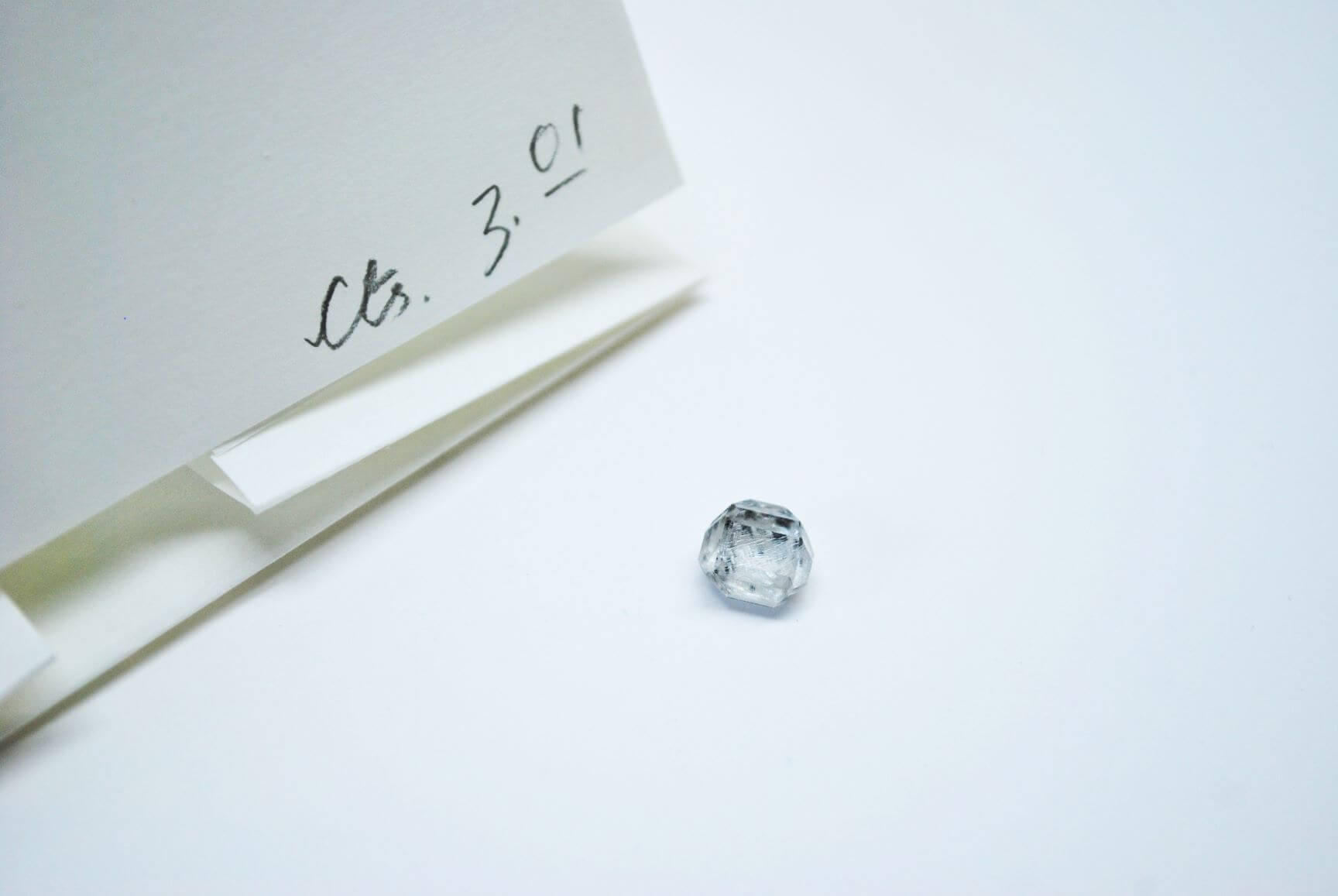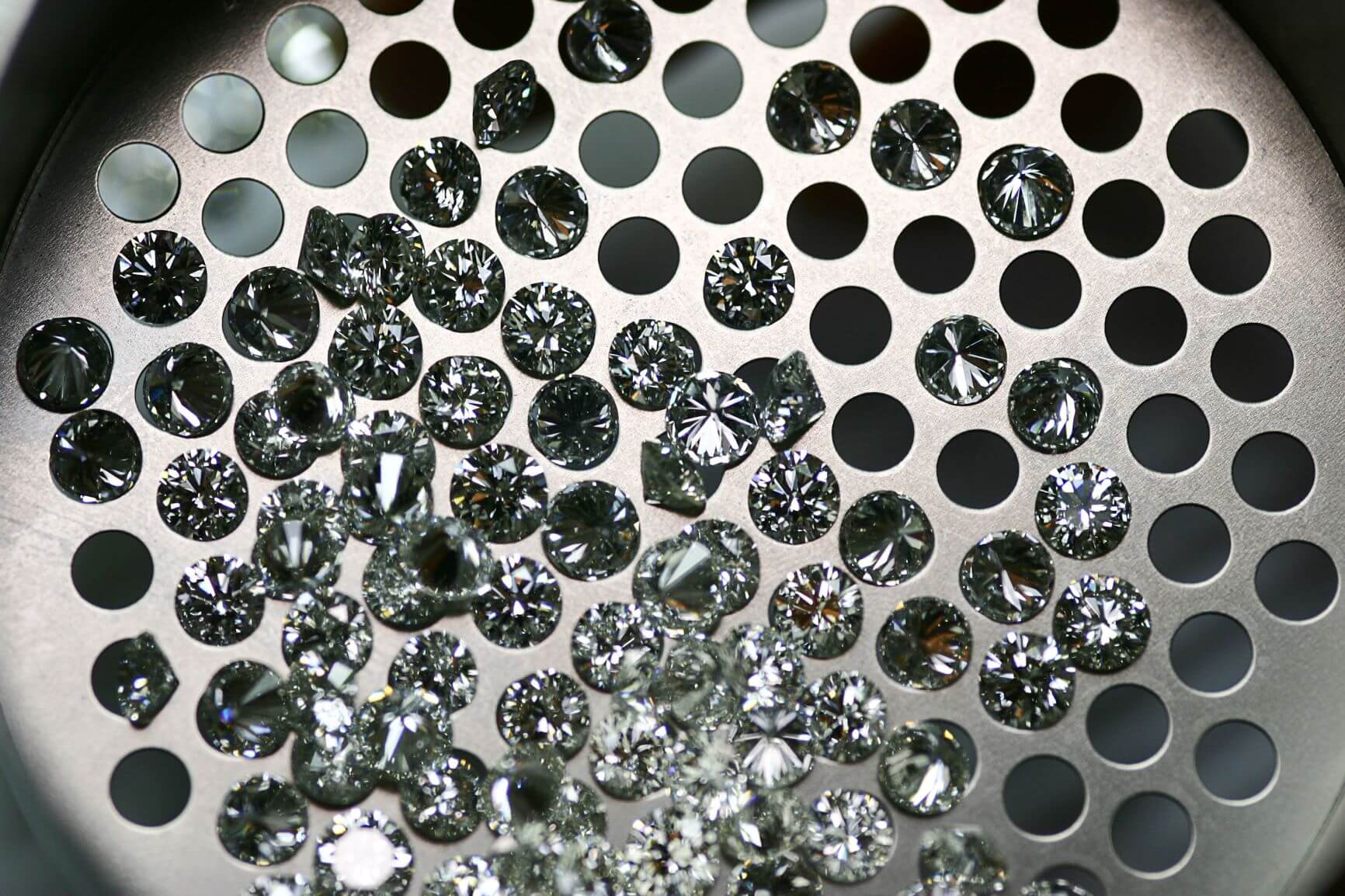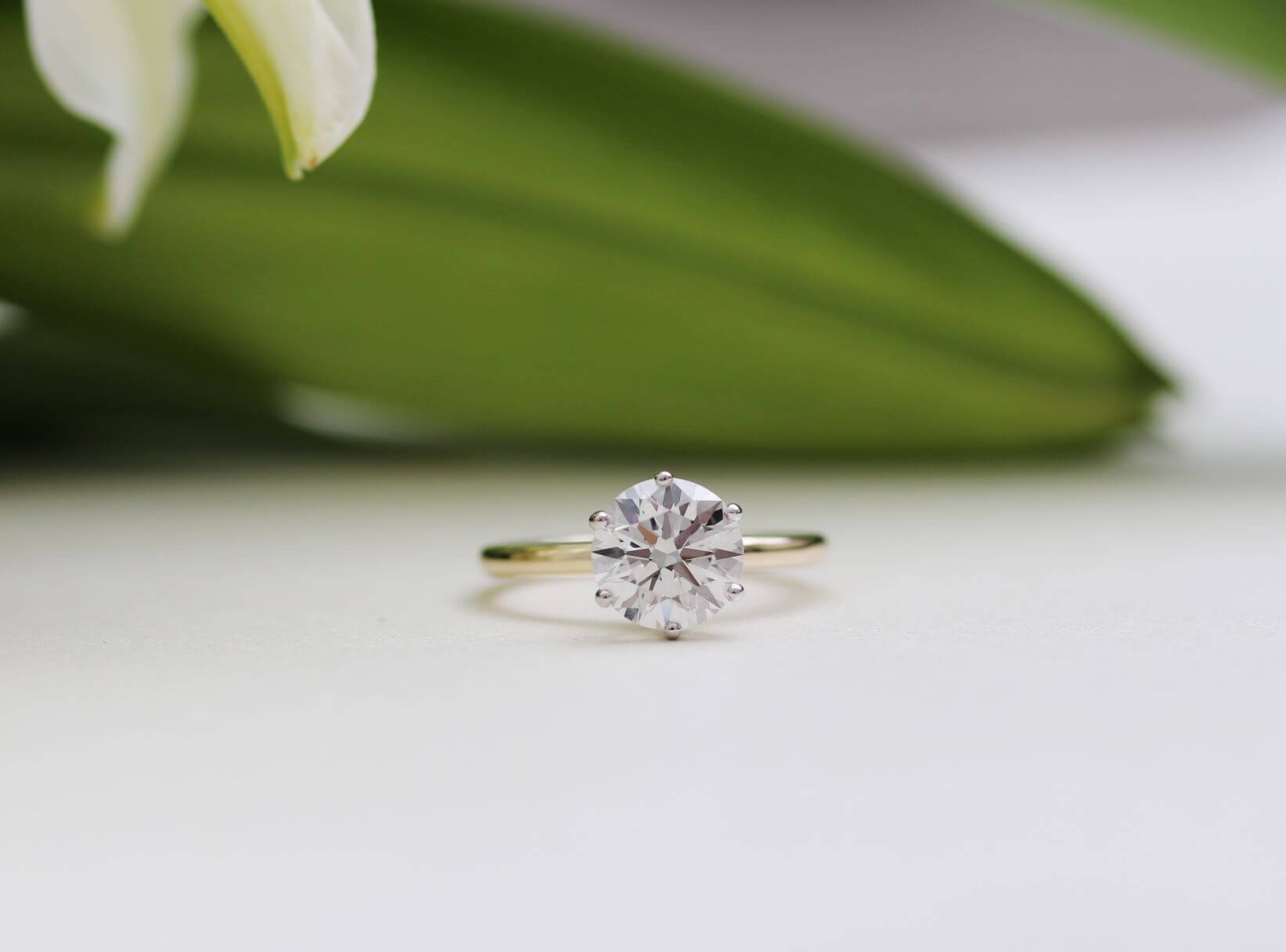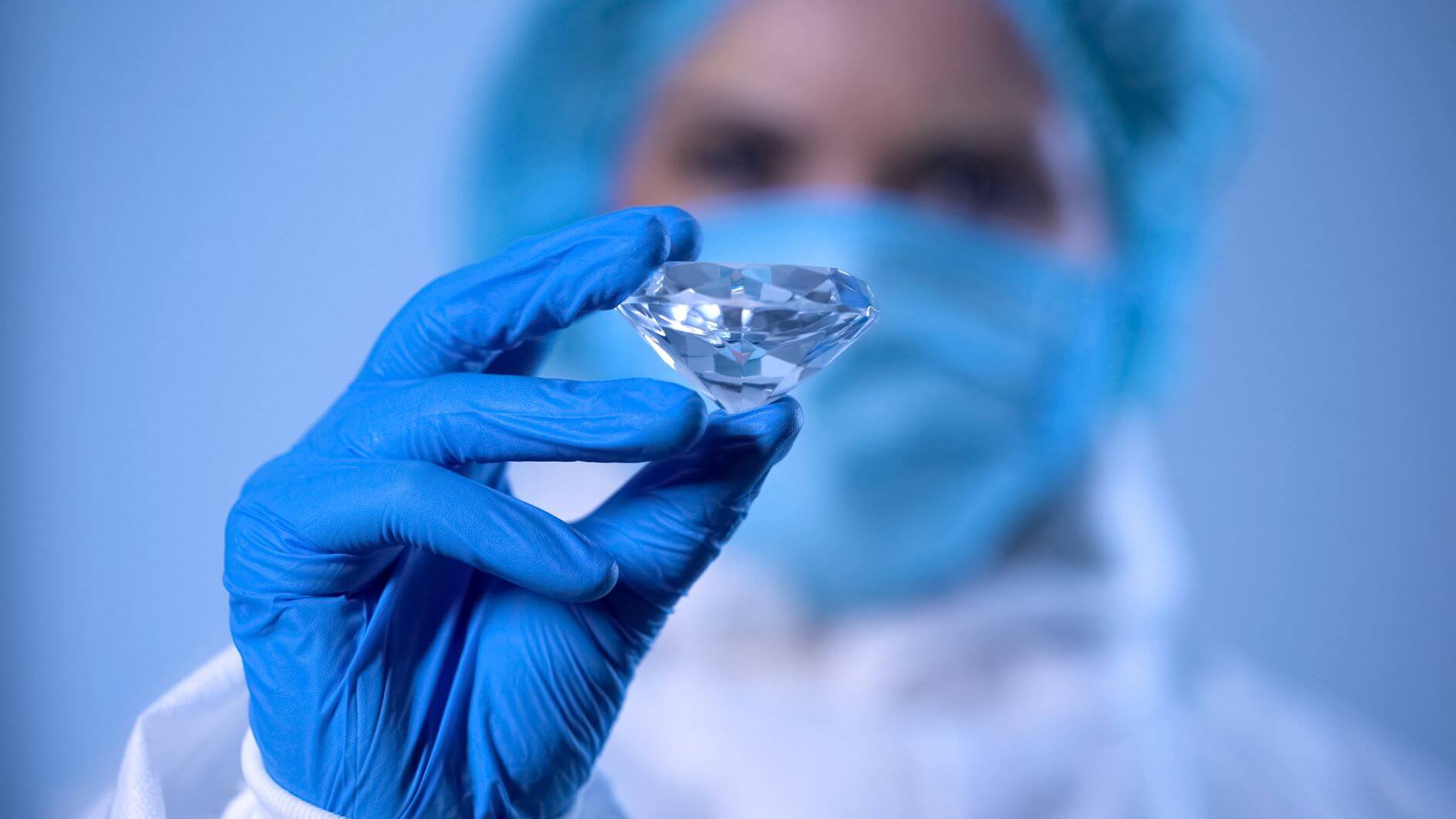Diamonds are a symbol of eternal love. Ubiquitous in engagement rings and eternity rings, diamonds remain the most enduring gemstone for signifying everlasting love between couples. The popularity and comparative rarity of these gems mean it’s no surprise that the diamond jewellery market is worth approximately $64 billion in 2020.
But questions remain about the ethics and sustainability of mining naturally occurring diamonds, which have led to a boom in a new diamond market: lab grown diamonds.
Lab-grown diamonds offer all the glamour and symbolism of naturally occurring diamonds, but they’re more sustainable and ethical to produce. Even large jewellery brands are making the switch to lab grown diamonds – so why are they important, and should you choose lab grown diamonds for your engagement ring?

Why Lab Grown Diamonds Are Important
Diamond mining is an extremely lucrative trade, but one which has been shrouded in controversy for decades. Mining for diamonds causes environmental and ethical issues, including habitat destruction, human trafficking, and child labour. While many jewellers have committed to using ethically-sourced naturally occurring diamonds in their jewellery, lab grown diamonds offer another solution to the problem.
How Lab Grown Diamonds Are Made
Whether they’re grown naturally or in a lab, diamonds need the same environment to flourish: high temperatures and extreme pressure.
In the High Pressure High Temperature (HPHT) process, laboratories aim to replicate the natural environmental processes that cause diamonds to grow. They put the diamond seed (a small flat piece of an existing diamond) in a press with an extremely pure carbon source. The press is then heated to temperatures of more than 1400°C and pressurised, which causes the carbon to melt and attach itself to the diamond, creating a new gem.
HPHT processes aren’t just used to create new diamonds. The HPHT process has been used since the 1950s to improve the appearance of “flawed” naturally occurring diamonds, improving the colour and lustre of the stones. So while this technology isn’t exactly new, it’s now being used for more ethical, sustainable purposes, as well as aesthetics.

Lab Grown Diamonds Vs Naturally Occurring Diamonds
It’s virtually impossible to tell the difference between a lab grown diamond and a naturally occurring diamond with the naked eye. While natural diamonds take millions of years to form, and lab grown diamonds can be created in a matter of weeks, the high pressure, high temperature processes behind them are actually very similar – so there’s no real difference in the form or structure of the diamond.
Jewellers can use specialist instruments to identify lab grown diamonds, but to most people, they are indistinguishable. In fact, they are chemically identical to naturally mined stones.
The only real difference between the two – besides the ethical variations – is price. Despite the chemical and aesthetic similarities to natural diamonds, lab grown diamonds can be sold for up to 10 times less than their natural counterparts. This makes them an extremely appealing alternative for people looking to pop the question.
The Rise Of Lab Grown Diamonds In Wedding Jewellery
Lab grown diamonds have become much cheaper to produce in recent years, which is why they can be sold at much lower prices. In 2008, it cost laboratories approximately $4,000 to produce each carat. Ten years later, that figure had decreased to between $300 and $500 per carat. These lower production costs have been passed on to consumers, so there are now much cheaper diamond engagement rings on the market.
While price has inevitably had an impact on the popularity of lab grown diamonds, the ethical credentials of these synthetic gems also contributes to the rise. With jewellers who use naturally occurring gems looking to emphasise the conflict-free source of their diamonds, it’s clear that the trend for ethically produced diamonds isn’t going anywhere.
Did you know: almost 70% of millennials would consider purchasing lab grown diamonds for their engagement ring? The lab created diamond market is a market that’s sure to expand.
That said, sustainability issues continue to surround lab grown diamonds. The high temperature, high pressure environment needed to grow diamonds in a laboratory environment uses a significant amount of energy.
Lack of clear data makes it tricky to compare the environmental credentials between natural and lab grown diamonds. But since diamonds remain sought after, the ethical and price differentials may be enough to shift people’s preferences towards lab grown diamonds.

Why Choose A Lab Grown Diamond For Your Engagement Ring
It’s a common misconception that diamonds are rare, which is why they’re so expensive. In fact, diamonds are more common than rubies, emeralds, and sapphires – and, per carat, they’re cheaper than these alternative engagement ring gemstones. The real reason for the high cost of diamonds is market demand. For centuries, diamonds have represented love and commitment, and there’s no sign of that symbolism shifting any time soon.
Diamonds are timeless, iconic, and irrevocably associated with weddings and engagement. Lab grown diamonds make diamond rings more accessible to couples who may have once been priced out of the diamond market. If you’re looking for classic sophistication at a more affordable price, lab grown diamonds may be the perfect option for your engagement ring.
Lab grown diamonds are also an excellent choice if ethical sourcing is important to you. They eradicate the potentially grey area of finding truly conflict-free diamonds, making it simple to find and purchase an engagement ring you or your partner can wear with pride.
If you’re considering purchasing wedding jewellery that uses lab grown diamonds, take a look at the variety of diamond cuts available. Like natural diamonds, lab grown diamonds come in a variety of shapes, including marquise, pear, and princess cuts. This guide will walk you through the wealth of cuts, including their names, shapes, and advantages, to help you choose the perfect diamond ring for you or your partner.
Looking for more wedding ring-related inspiration? Find out more about choosing your perfect engagement ring here.



